iPhone 6 and iPhone 6 Plus: Preliminary Results
by Joshua Ho on September 22, 2014 7:07 AM EST- Posted in
- Smartphones
- Apple
- Mobile
- iOS
- iPhone 6
- iPhone 6 Plus
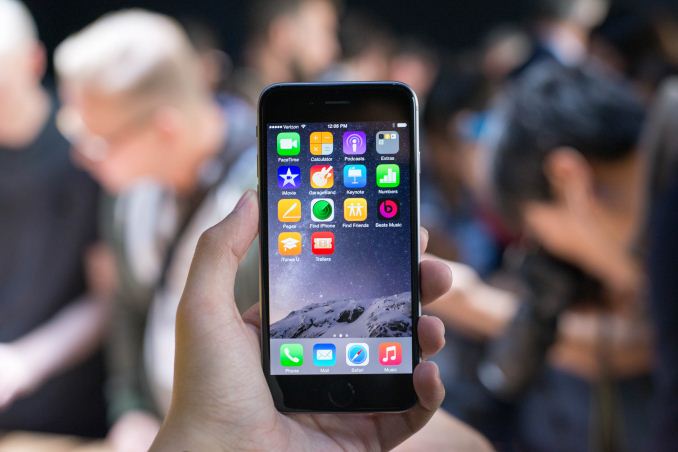
While we’re still working on the full review, I want to get out some preliminary results for the iPhone 6. For now, this means some basic performance data and battery life, which include browser benchmarks, game-type benchmarks, and our standard web browsing battery life test. There’s definitely a lot more to talk about for this phone, but this should give an idea of what to expect in the full review. To start, we'll look at the browser benchmarks, which can serve as a relatively useful proxy for CPU performance.
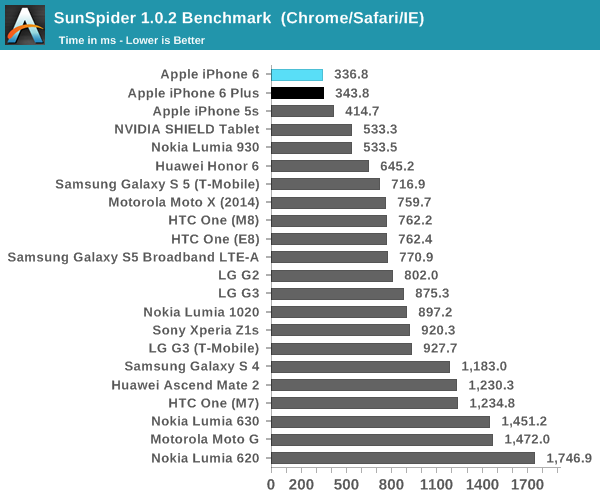
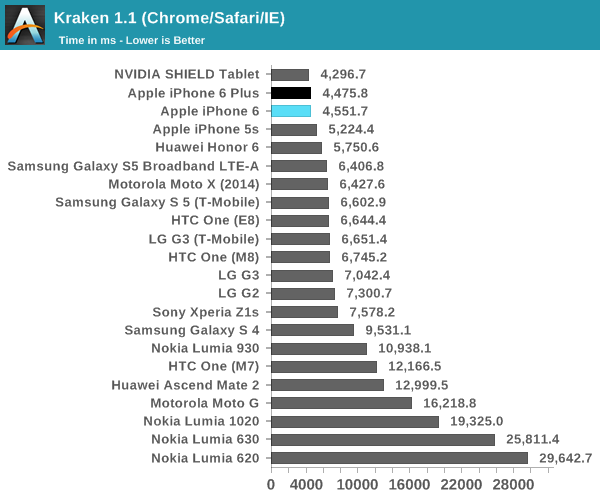
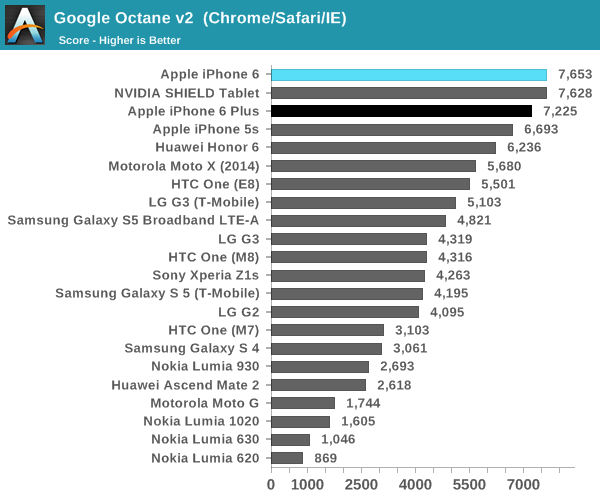
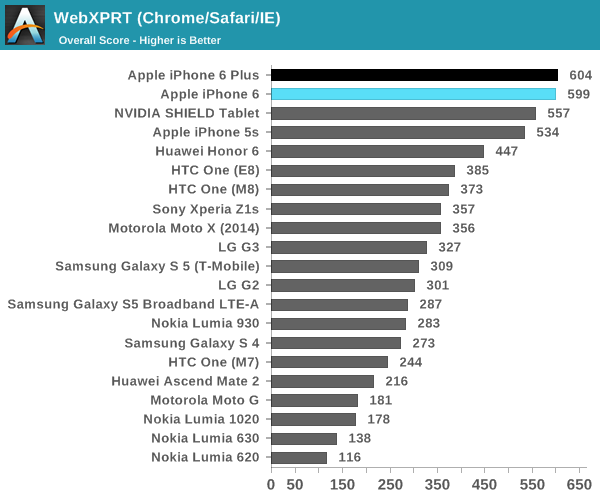
There are a few interesting observations here, as a great deal of the scaling is above what one would expect from the minor frequency bump when comparing A7 and A8. In SunSpider, we see about a 13% increase in performance that can't be explained by frequency increases alone. For Kraken, this change is around 7.5%, and we see a similar trend across the board for the rest of these tests. This points towards a relatively similar underlying architecture, although it's still too early to tell how much changes between the A7 and A8 CPU architectures. Next, we'll look at GPU performance in 3DMark and GFXBench, although we're still working on figuring out the exact GPU in A8.
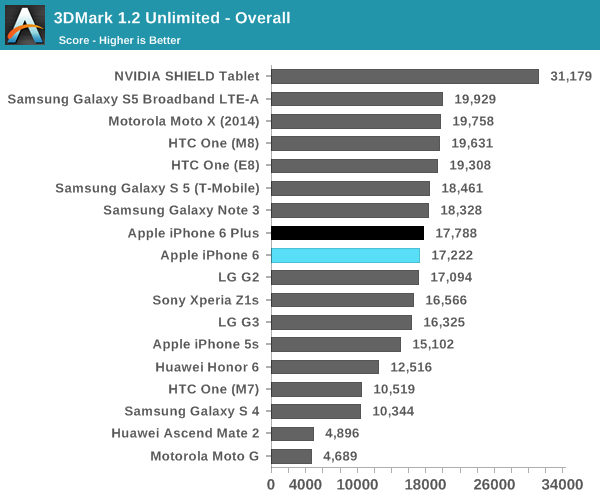
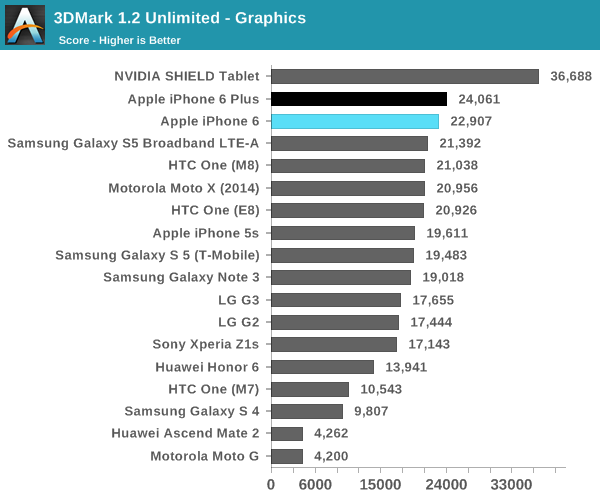
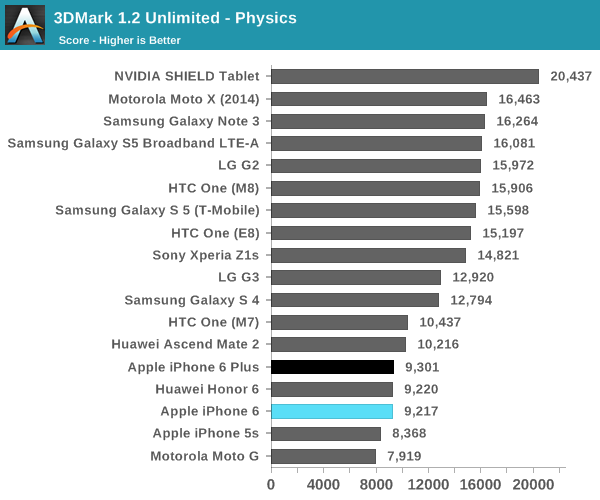
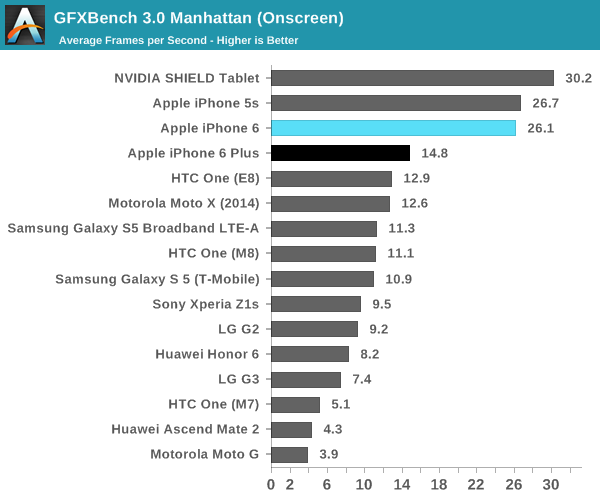
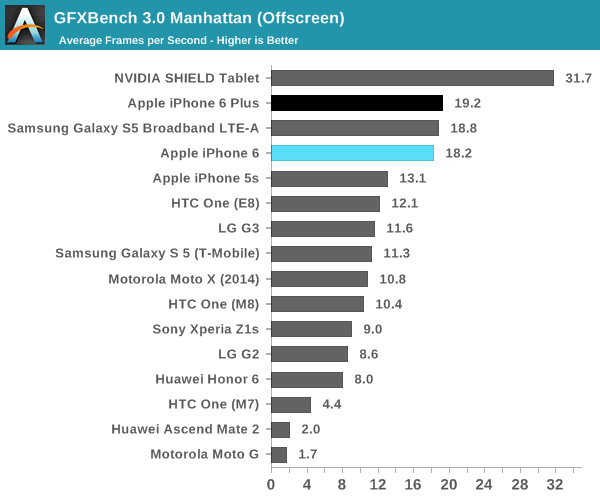
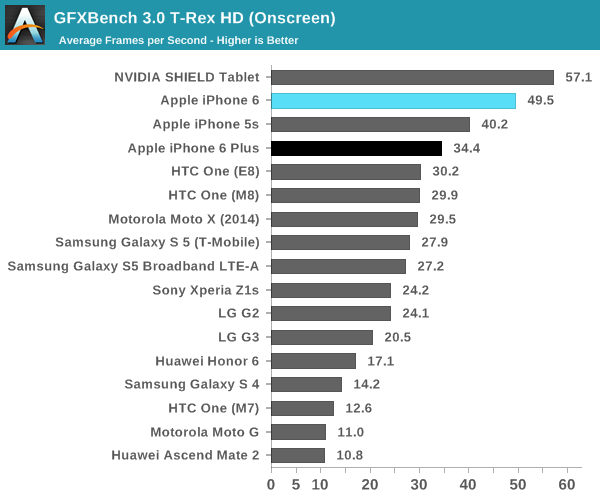
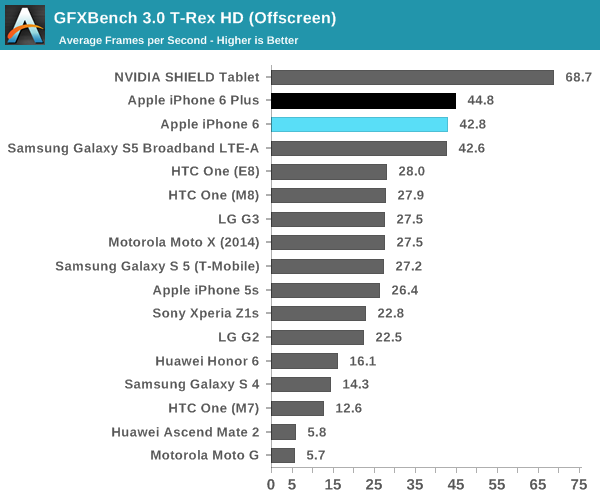
In in GPU benchmarks, we generally see a pretty solid lead over the competition for the iPhone 6/A8. It's seems quite clear that there is a significant impact to GPU performance in the iPhone 6 Plus due to the 2208x1242 resolution that all content is rendered at. It seems that this is necessary though, as the rendering system for iOS cannot easily adapt to arbitrary resolutions and display sizes. Before we wrap up this article though, I definitely need to address battery life. As with all of our battery life tests, we standardize on 200 nits and ensure that our workload in the web browsing test has a reasonable amount of time in all power states of an SoC.

As one can see, it seems that Apple has managed to do something quite incredible with battery life. Normally an 1810 mAh battery with 3.82V nominal voltage would be quite a poor performer, but the iPhone 6 is a step above just about every other Android smartphone on the market. The iPhone 6 Plus also has a strong showing, although not quite delivering outrageous levels of battery life the way the Ascend Mate 2 does. That's it for now, but the full review should be coming in the near future.










316 Comments
View All Comments
GC2:CS - Monday, September 22, 2014 - link
Yeah, but phone arena has some strange battery life testing in there... They runned it down in 5:22 which is less than a half compared to anandtech... What the heck they do with that phone :D.But for example the samsung galaxy s5 lasts significally more than the samsung galaxy note 3 and I call that strange as well.
We will need to wait for more battery life tests from other sites and somehow make a average from those as battery life testing is naturaly wildly inconsistent across the Internet.
anactoraaron - Monday, September 22, 2014 - link
The S5 lasting longer is the improvements made in samoled tech. Also makes sense how the note 3 looks bad on battery life - most webpages are mostly white with black lettering. That much white for an older samoled puts the note 3 in a disadvantage- it basically gives you the worst possible scenario for battery life.The note 4 should do much better with all the improvements in samoled tech shown in the S5's numbers.
melgross - Monday, September 22, 2014 - link
There hasn't been much of an improvement in Samsung's AMOLED screens as far as efficiency goes. AMOLED still has serious problems in that area. It's why AMOLED is about half as bright as the average LCD screen.Zink - Monday, September 22, 2014 - link
Displaymate disagrees, check out the Note 4 AMOLED tech. Given the current rates of progress it could very easily be LCD that has the efficiency problem next year. It has been confirmed the Apple Watch will be AMOLED, I would love to see Apple phones and laptops with AMOLED in the next few years.http://www.displaymate.com/Galaxy_Note4_ShootOut_1...
soccerballtux - Monday, September 22, 2014 - link
I question battery results as well, nobody no matter what is getting 8hours screen on time, much less while wifi browsing, out of their Nexus 5. I posit (well, bet) that these tests were run on 4.4.1 or 4.4-- battery lives dropped significantly, on the order of 35-55mins screen on time (thanks "Android System") when 4.4.2 came outSushisamurai - Monday, September 22, 2014 - link
The battery results should be accurate. It's not a question of their testing methodology, but a measure of their precision. Anandtech tests all their phones the same way (high precision), ergo, whatever differences that arise from one website to another, assuming they also standardize their testing methodology, would be from the testing method (function of accuracy). Therefore, any attributable difference from one website to another is due to how they test the phone, however, relative standings for the phones should still hold (e.g.: % difference in battery life should still hold per each phone per website, assuming proper standardization and control of variables)Zoomer - Monday, September 22, 2014 - link
It's irrelevant - they the numbers are used to compare against other phones running the same test.Affectionate-Bed-980 - Tuesday, September 23, 2014 - link
Its relative, but I doubt it scales that well. CPUs scale differently and also different generations of CPUs and network chips will act differently when you compress the time scale. Race to idle benefits the faster CPUs in the end.So its hard to take an Anandtech benchmark and say that a phone that lasts 10 hours will last twice as long as once that lasts 5 hours in their benchmark.
Anandtech's numbers are good for comparing against other phones, but in the end you have that difficulty in translating those numbers into real world usage figures. TBH this is where GSM Arena's endurance rating comes in. Its not the cleanest test method, but its the best we have right now and the only site that tests idle use. GSM Arena's test results are relatively consistent with what you hear out there. The N5 does well on AnandTech but almost every user agrees its mediocre at best in performance. Most users see S5s and M8s outperform their Nexus 5s in typical daily use scenarios in terms of battery, which is reflected very accurately in the GSM Arena benchmarks. The 1 or so hour difference in WiFi life from Anandtech's site between the N5 and other flagships isn't very realistic I don't think. I also find my iPhone 5 can easily outlast my Nexus 5 in screen on time, and the difference is pretty startling.
lucam - Tuesday, September 23, 2014 - link
Look guess what if I don't use my phone, it last 2 days. Is it a fair saying? That is my usage...compare with your phone if you can.uhuznaa - Monday, September 22, 2014 - link
You shouldn't treat these tests as something similar to real use. Loading one web page after another is VERY different from browsing (where you actually scroll on pages), since it just downloads and renders a page and then sits there sleeping until the next load. And the phones are pristine, with no services running in the background, no accounts being synced...But this is the only way to have a controlled setup that creates scores you can compare phones on.